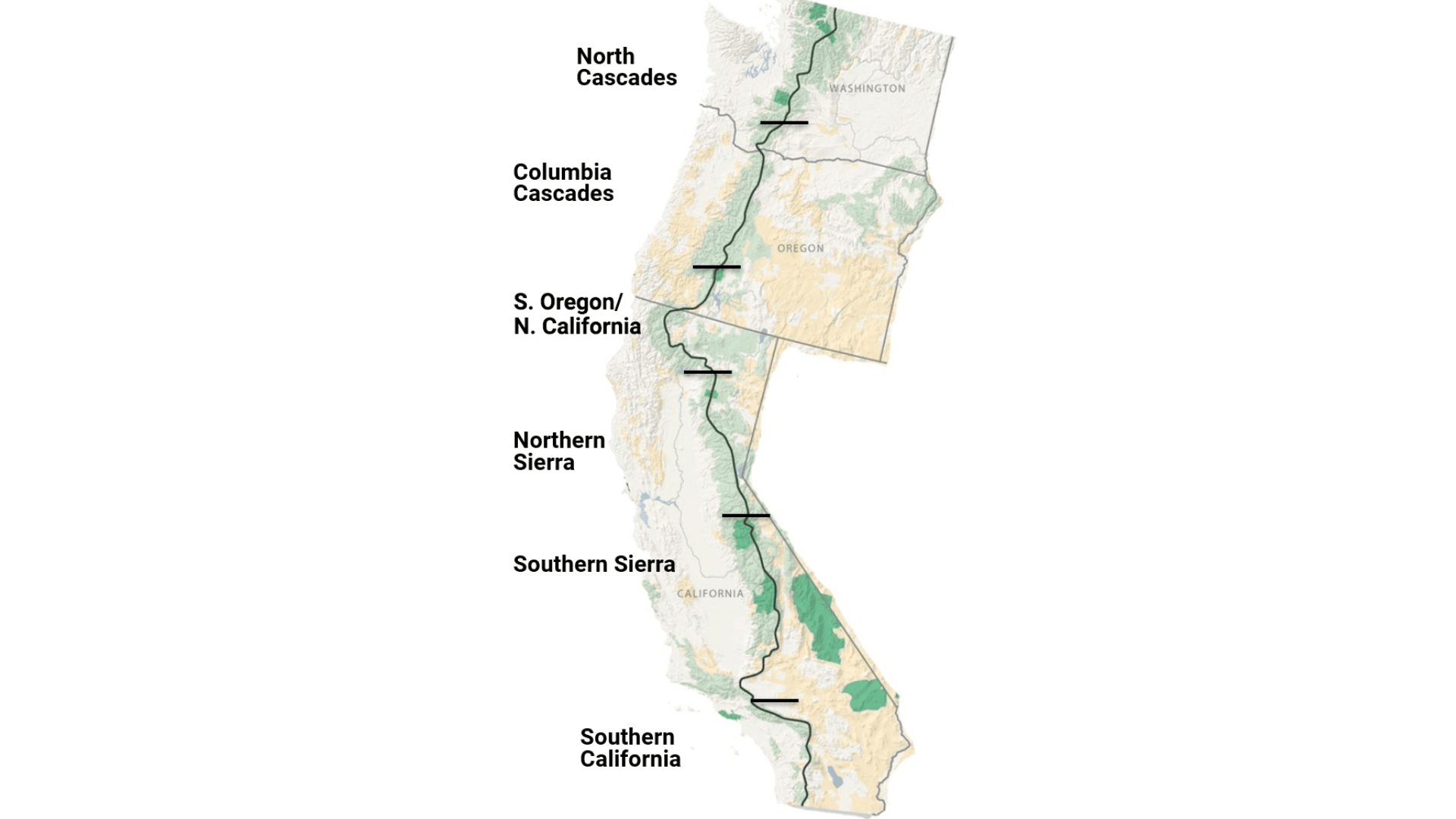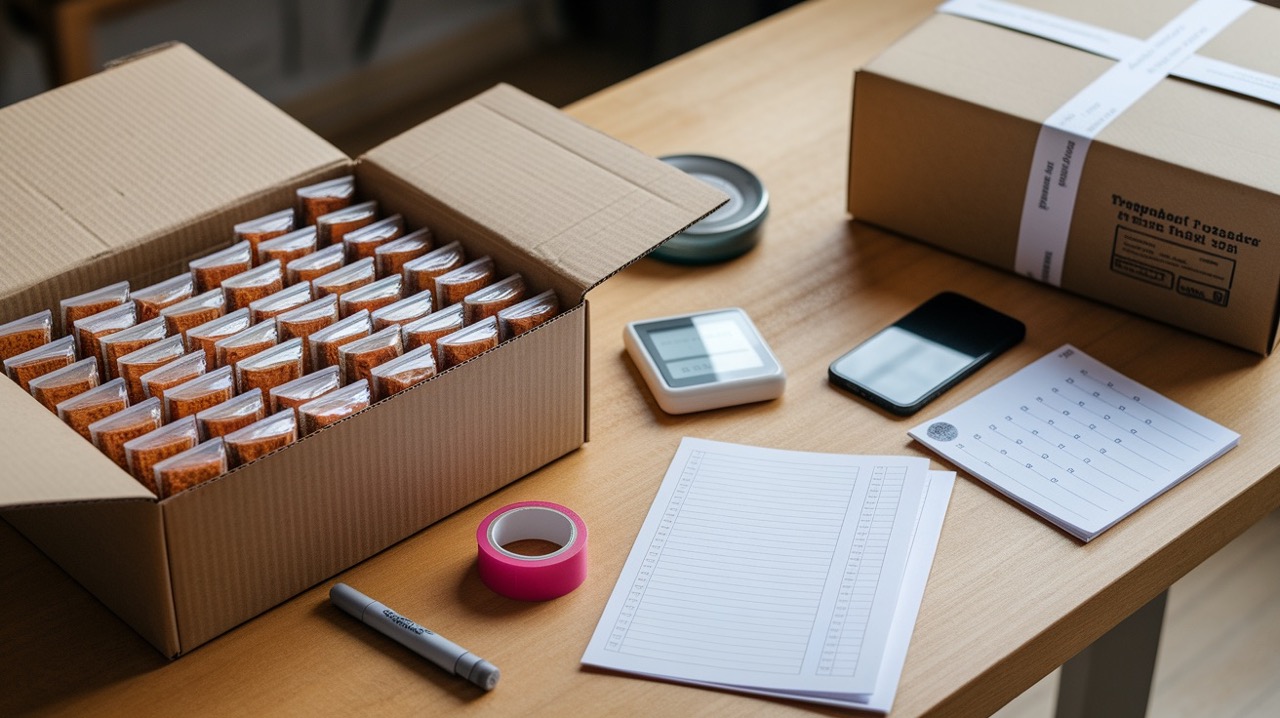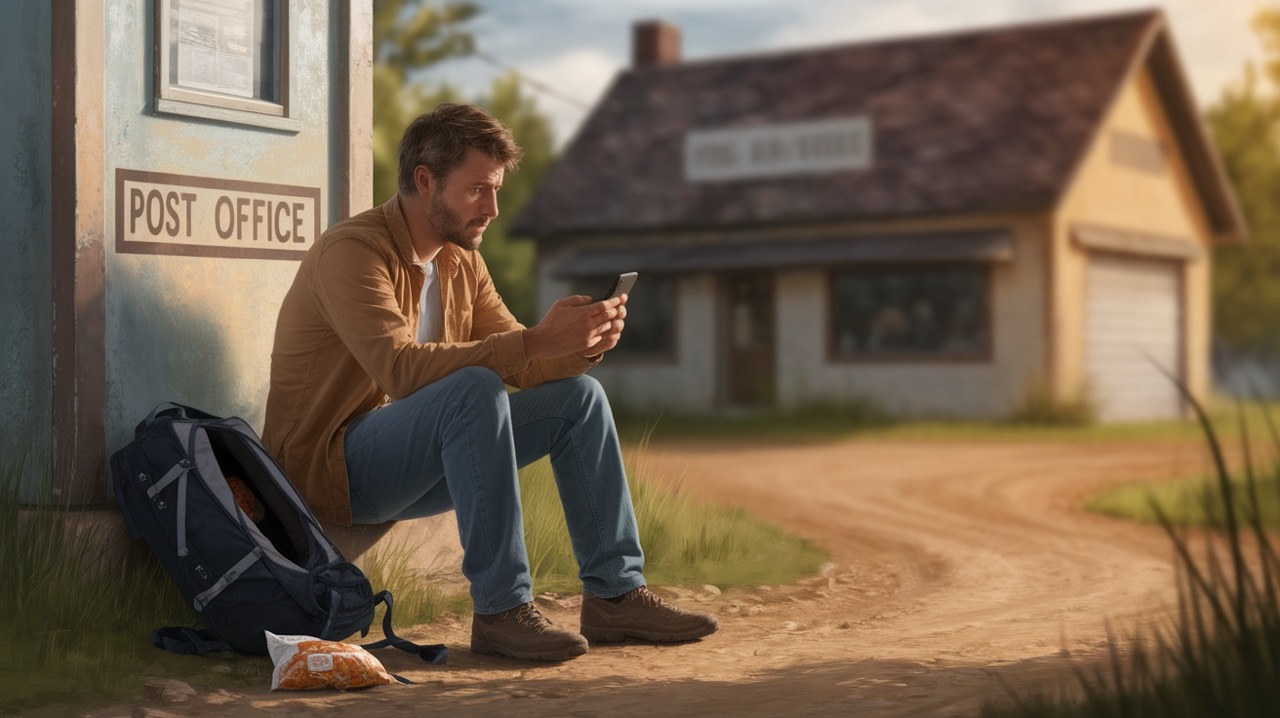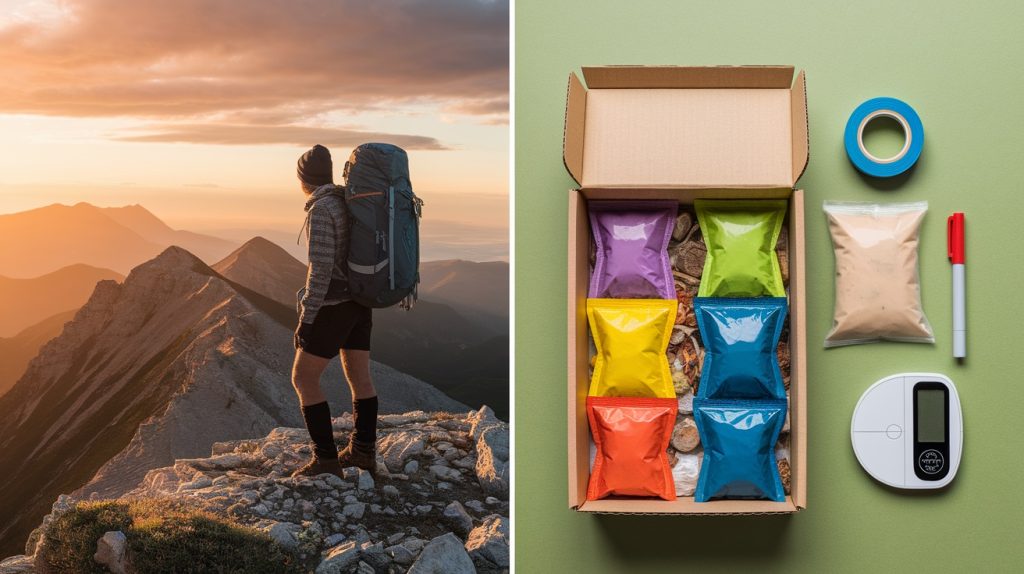The Pacific Crest Trail (PCT) spans 2,650 miles (4,265 kilometers) from Mexico to Canada through California, Oregon, and Washington.
This long-distance hiking path takes most walkers 4-6 months to finish.
One of the biggest planning tasks for PCT hikers is setting up a good resupply system.
Hikers cannot carry food for the whole trail at once.
Most need to get more food every 3-7 days.
This guide will explore the different ways to resupply smartly while going through the Pacific Crest Trail.
By the end, you will have the know-how needed to plan your PCT food strategy, even if you are a first-timer or an old pro looking to make your next hike better.
Why PCT Resupply Planning Matters?
The Pacific Crest Trail (PCT) crosses Southern California’s hot deserts, the high Sierra Nevada mountains, and the forests of Oregon and Washington.
Hikers deal with extreme heat, rocky paths, and snowy mountain passes.
They need to be strong, able to locate, and always ready for sudden weather changes.
Resupply points, which are found in towns or stores like Kennedy Meadows and Mammoth Lakes, are spaced about 30 to 100 miles (48 to 161 km) apart.
These are some stops where hikers can get more food and gear, while there can be a long distance between each stop.
Some spots offer just the basics, while others have everything a hiker might need.
In remote areas like the High Sierra, hikers may carry up to 10 days of food.
Because some areas are limited or hard to reach, many hikers plan their resupply stops carefully.
How to Plan Your PCT Resupply Schedule?

Planning your resupply schedule on the Pacific Crest Trail (PCT) is key to staying well-fed and energized throughout your hike.
Here are three common ways to manage your food and supplies efficiently.
1. Buy as You Go
You can buy food and supplies at towns along the trail, where supermarkets and stores are more common now.
This method lets you carry less weight and adjust your needs as you go.
2. Send Resupply Boxes
Mail packages with food and gear to post offices or special locations on the trail.
This helps when towns have limited or expensive options, ensuring you have what you need.
3. Combine Both Strategies
Mix buying locally with sending boxes for remote sections or special items.
This flexible approach balances convenience and preparedness on your hike.
Steps to Plan Before Preparing for Resupply
Before resupply, know how to reach towns. You might hitchhike, ride a shuttle, or get a pickup from a hiker-friendly hostel.
Use helpful trail apps like FarOut (Guthook), Gaia GPS, or PCT Planner.
These apps show towns, miles, and where to resupply.
Check if stores are open and how far they are from the trail. Good planning keeps you from running out of food or walking too far without knowing where to go next.
Where to Resupply on The PCT: Regional Breakdown

Knowing where to resupply is key to planning a successful PCT hike.
The trail passes near many towns and service points where hikers can restock.
1. Southern California Region
These resupply points help hikers through the hot, dry desert section at the start of the PCT.
- Mount Laguna (Mile 42): Small store with basics but pricey.
- Idyllwild (Mile 179): Full grocery store, gear shop, and post office.
- Big Bear City (Mile 266): Large supermarkets and all services.
- Wrightwood (Mile 369): Good grocery store and hiker-friendly town.
- Agua Dulce/Acton (Mile 454): Grocery store in Agua Dulce.
2. Sierra Nevada Region
These stops support hikers through the highest and most challenging terrain on the PCT.
- Kennedy Meadows (Mile 702): Famous stop before the Sierra, but has limited supplies.
- Independence/Bishop (Mile 789): Reach from Kearsarge Pass.
Bishop has all the services. - Mammoth Lakes (Mile 907): Full services, large stores.
- South Lake Tahoe (Mile 1092): All services and large stores.
3. Northern California Region
These resupply points help hikers through the forested mountains of Northern California.
- Sierra City (Mile 1198): Small store with basics.
- Belden (Mile 1289): Very small resupply at resort.
- Chester (Mile 1333): Good-sized grocery store.
- Mount Shasta (Mile 1501): Full supermarket and services.
4. Oregon Region
These stops supply hikers through Oregon’s volcanic landscapes and forests.
- Ashland (Mile 1727): Large stores and full services.
- Crater Lake (Mile 1830): Small store at Mazama Village.
- Bend/Sisters (Mile 2000): Full services, reached by hitchhike.
- Cascade Locks (Mile 2155): Small grocery and bridge to Washington.
5. Washington Region
These final resupply points support hikers through Washington’s challenging mountain terrain.
- Trout Lake (Mile 2234): Small store with basics.
- White Pass (Mile 2303): Small store with hiker basics.
- Snoqualmie Pass (Mile 2402): Small grocery at gas station.
- Stehekin (Mile 2580): Limited store, famous bakery, last stop before Canada.
Most hikers use 25-30 resupply stops during a complete thru-hike, averaging one stop every 4-5 days, depending on hiking speed and personal needs.
How to Mail Resupply Boxes for the PCT?

Planning to hike the Pacific Crest Trail? Resupply boxes help you stay ready, fueled, and focused.
Here’s a quick guide to keep things smooth on your venture.
Know When & Where to Send
Some towns don’t have many stores—plan ahead.
Ship boxes 2–3 weeks early for remote places; 1–2 weeks is fine for bigger towns.
Pack Smart & Light
Keep boxes under 20 pounds to make carrying easier.
Medium USPS flat-rate boxes fit 4–7 days of food just right.
Fuel Your Hike Right
Aim for 3,500–5,000 calories a day to keep your energy up.
Add special foods or gear you’ll need for the next trail section.
Label & Track Everything
Write your name, “Hold for PCT Hiker,” and ETA on each box.
Use bright tape and save tracking numbers just in case.
Pick-Up Tips & Extra Fees
Always bring your ID and check the post office hours.
Some places may charge $5–$15 to hold your box—check before you send.
NOTE: Always include a backup plan for resupply points – weather delays or closures can happen unexpectedly. Double-check pickup hours and contact information before you hit the trail.
Budgeting Your PCT Resupply Costs

Understanding the food costs for a Pacific Crest Trail (PCT) hike is crucial for effective budgeting and planning.
| CATEGORY | DETAILS |
|---|---|
| Daily Trail Food Cost | $10-15 per day, totaling $1,500-2,250 for a 5-month hike (trail meals only). |
| Town Food Expenses | Additional costs for meals in towns are not included in the trail food budget. |
| Cost Variation by Location | Small trail town stores charge 30-40% more than larger city stores. |
| Mailing Box Costs | Shipping a medium USPS flat-rate box costs $16-20 per box. |
| Box Holding Fees | Some resupply points charge $5-15 to hold mailed boxes. |
| Total Resupply Budget | Ranges from $2,000 to $3,500 for food, depending on choices and strategies. |
Tips to Save Money on PCT Resupply
These strategies can help stretch your food budget throughout your hike:
-
Smart Shopping Strategy: Buy food in bulk at large stores like Walmart or Costco, then use a mail-forward approach by purchasing 2-4 weeks worth of supplies at once and shipping boxes to upcoming resupply points.
-
DIY Food Preparation: Dehydrate your own meals instead of purchasing expensive freeze-dried options, and focus on high-calorie foods with the best cost-per-calorie ratio like peanut butter, oats, and pasta.
-
Maximize Free Resources: Take advantage of hiker boxes at hostels and trail stops for free donated items, and consider group buying with hiking partners to split bulk purchase costs.
-
Control Town Expenses: Limit restaurant meals since one meal can cost as much as 2-3 days of trail food, and stick to shopping lists to avoid impulse purchases when you’re hungry after long trail sections.
-
Right-Size Your Supplies: Avoid overpacking food (most hikers carry too much initially), and if funds run low, consider picking up odd jobs in trail towns to supplement your budget.
With careful planning and smart shopping, you can maintain good nutrition while keeping your resupply costs manageable throughout your PCT trek.
What to Do When Resupply Plans Fail?

Even the best plans can fall apart on the Pacific Crest Trail, so it is important to stay calm and think clearly.
If a package is lost, contact the mail carrier using your tracking number for help or redirection to the next stop.
Post offices can often forward boxes, while nearby gas stations or campgrounds may have basic food when stores are closed.
Check hiker boxes at hostels for leftover food and ask trail angels or locals for help with rides or supplies.
The hiking community is supportive, so build friendships and share useful information when possible.
Always carry extra food for one or two days and ration in remote areas if needed.
Keep a list of resupply towns, contact details, and carry emergency cash in case you need to reach bigger towns.
Common Mistakes to Avoid

Many PCT hikers run into the same resupply problems that can be easily avoided with better planning.
- Not checking trail updates: Fires, snow, or trail changes can block your planned resupply stop, leaving you stranded without food.
- Poor food planning: Packing too little variety leads to food fatigue, while skipping meals to save weight will leave you weak and slow on the trail.
- Over-relying on technology: GPS devices and apps can fail when batteries die – always bring paper maps and backup cash since some towns don’t accept cards.
- Skipping practice runs: Test your packing system at home to see what fits and what doesn’t, rather than figuring it out on the trail.
- Being too rigid with plans: The trail changes constantly, so your resupply strategy needs flexibility to adapt to new conditions and your body’s changing needs.
Being aware of these common pitfalls helps create a resupply strategy that supports rather than complicates your hike.
Wrapping It Up
Planning your PCT resupply is key to a good hike, but it doesn’t have to be hard.
By mixing store resupply with some mail drops, you’ll have food when needed without too much stress.
Most hikers find that simple plans work best: resupply every 4-5 days, send boxes only to spots with poor options, and adapt as you go.
Remember that your food needs and tastes will change on the trail. What seems delicious at home might not work after weeks of hiking.
With the right mix of planning and flexibility, your PCT resupply strategy will support your hike without taking over your trip.




